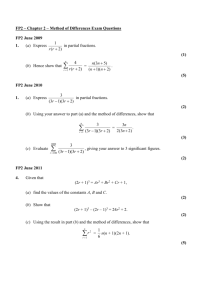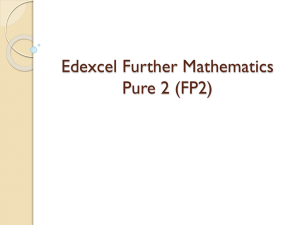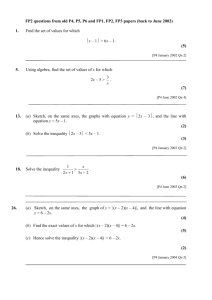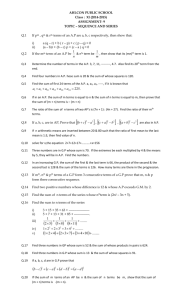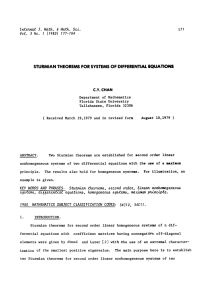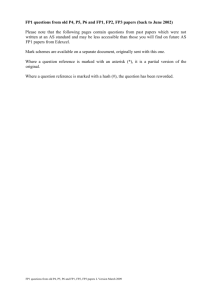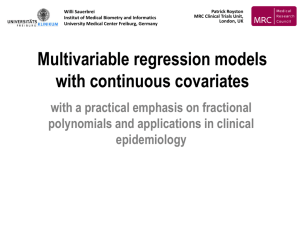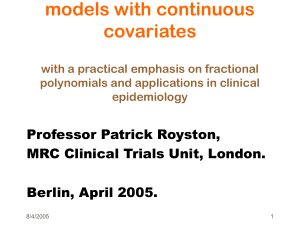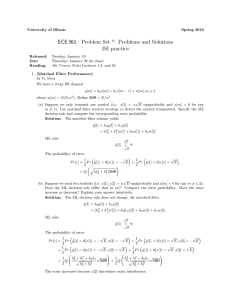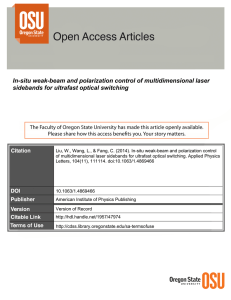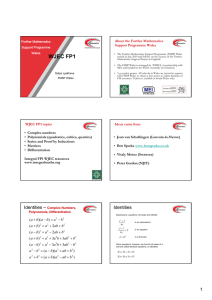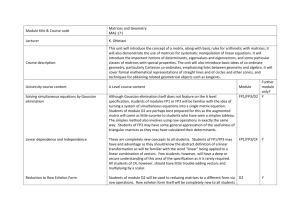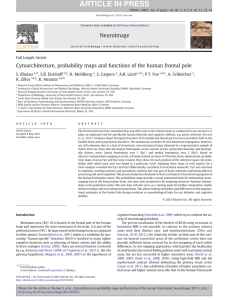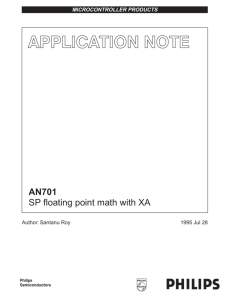series qns past papers
advertisement
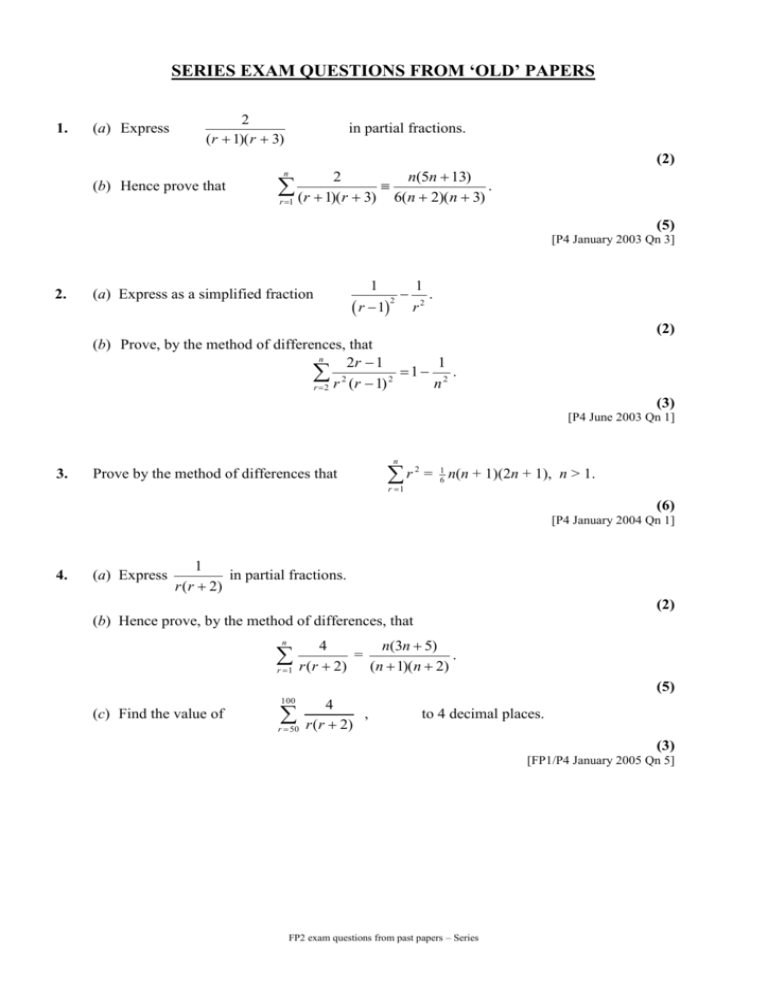
SERIES EXAM QUESTIONS FROM ‘OLD’ PAPERS 1. (a) Express 2 (r 1)( r 3) in partial fractions. (2) n (b) Hence prove that n(5n 13) 2 (r 1)(r 3) 6(n 2)(n 3) . r 1 (5) [P4 January 2003 Qn 3] 2. 1 (a) Express as a simplified fraction r 1 2 1 r2 . (2) (b) Prove, by the method of differences, that n 2r 1 1 1 2 . 2 2 n r 2 r ( r 1) (3) [P4 June 2003 Qn 1] n 3. r Prove by the method of differences that r 1 2 = 16 n(n + 1)(2n + 1), n > 1. (6) [P4 January 2004 Qn 1] 4. (a) Express 1 in partial fractions. r (r 2) (2) (b) Hence prove, by the method of differences, that n 4 r ( r 2) = r 1 n(3n 5) . (n 1)( n 2) (5) 100 (c) Find the value of r 50 4 , r (r 2) to 4 decimal places. (3) [FP1/P4 January 2005 Qn 5] FP2 exam questions from past papers – Series 5. (a) By expressing 2 4r 1 2 in partial fractions, or otherwise, prove that n r 1 2 4r 1 2 =1– 1 . 2n 1 (3) 20 (b) Hence find the exact value of r 11 2 4r 1 2 . (2) [FP1/P4 June 2005 Qn 1] 6. Given that for all real values of r, (2r + 1)3 – (2r – 1)3 = Ar2 + B, where A and B are constants, (a) find the value of A and the value of B. (2) n (b) Hence, or otherwise, prove that r 2 = r 1 1 n(n + 1)(2n + 1). 6 (5) 40 (3r 1) (c) Calculate 2 . r 1 (3) [FP1 June 2006 Qn 5] 7. (a) Show that r3 r 1 1 1 r 1 , for r 0, 1. r (r 1) r r 1 (3) r r 1 , r 1 r (r 1) n (b) Find 3 expressing your answer as a single fraction in its simplest form. (6) [FP1 January 2007 Qn 4] 8. (a) Show that (r + 1)3 – (r – 1)3 6r 2 + 2. (2) n 1 r 2 = n(n + 1)(2n + 1). 6 r 1 (b) Hence show that (5) 2n (c) Show that r r n 2 = 1 n(n + 1)(an + b) , 6 where a and b are constants to be found. (4) [FP1 June 2007 Qn 3] FP2 exam questions from past papers – Series 9. (a) Express 5r 4 in partial fractions. r (r 1)( r 2) (4) (b) Hence, or otherwise, show that 7n 2 11n 5r 4 = . 2(n 1)(n 2) r 1 r ( r 1)( r 2) n (5) [FP1 January 2008 Qn 5] 10. (a) Express 2 in partial fractions. (r 1)( r 3) (2) (b) Hence prove, by the method of differences, that n 2 (r 1)(r 3) r 1 = n(an b) , 6(n 2)( n 3) where a and b are constants to be found. (6) 30 (c) Find the value of 2 , r 21 ( r 1)( r 3) to 5 decimal places. (3) [FP1 June 2008 Qn 6] FP2 exam questions from past papers – Series
